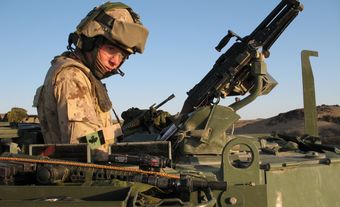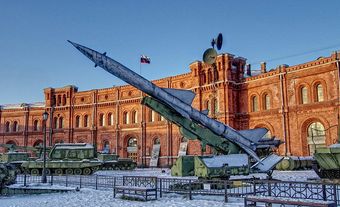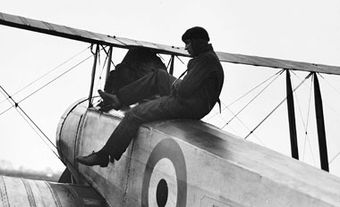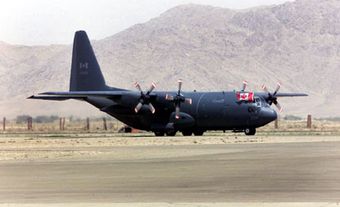The Lockheed Aurora is a long-range maritime patrol aircraft (LRPA) used in the Canadian Armed Forces for antisubmarine warfare (ASW) and maritime surveillance. The Aurora entered service in 1980 and replaced the CP-107 Argus. Thanks to structural improvements and the modernization of its avionics, the aircraft are expected to operate beyond 2030.

Lockheed Aurora
The Aurora is named for the “northern lights” Aurora Borealis. The four-engine turboprop was manufactured at Lockheed’s facility in Burbank, California; the first of 18 aircraft was delivered on 29 May 1980, with the last received in July 1981. As acquired, the Aurora combined the best of two proven United States Navy (USN) ASW systems: the airframe and engines of the P-3C Orion that had entered American service in the early 1960s, paired with the avionics and acoustics of the carrier-borne S3A Viking introduced in the 1970s.
Like its predecessor the Argus, the Aurora is distinguished by a magnetic anomaly detector (MAD) boom that extends from the rear of the fuselage; it also has an internal bomb bay for carrying eight Mk 46 antisubmarine torpedoes and a range of sonobuoys and flares. There are 10 underwing “hard points” for external ordnance, but these are rarely used. With a range of approximately 5,000 nautical miles (9,300 km), the Aurora can remain airborne for 17 hours, although typical mission endurance is 8–10 hours. An Aurora crew varies depending on the mission, but the aircraft can accommodate two pilots, a flight engineer, four navigators and three airborne electronic sensor operators.
The original plan was to acquire 24 aircraft in total, but six were cut due to funding pressures on the defence budget. The six aircraft were re-introduced in the Mulroney government’s 1987 Defence White Paper, only to be cut yet again in the 1989 federal budget as a “peace dividend” marking the end of the Cold War.
Instead, to save airframe flying hours for the main ASW fleet, another three aircraft were obtained primarily for crew training duties such as “touch-and-go” landing practice and long-range general surface reconnaissance such as the Arctic maritime patrol mission. (See also Canadian Arctic Sovereignty.) Known as the CP-140A Arcturus, these aircraft didn't have advanced ASW mission avionics. Delivered in early 1993, they were all withdrawn from service in 2011.

Modernization and Life Extension
The end of the Cold War suggested an end of the Aurora's primary mission of hunting Soviet submarines. Yet it was quickly found to be an ideal platform for “Intelligence, Surveillance and Reconnaissance” (ISR), conducting long range patrol missions over land as well as water.
The Aurora Incremental Modernization Project (AIMP) was begun in 1998 to progressively upgrade the electronics mission systems and sensors. It has been executed in a phased approach, with full operational capability expected in 2024. Concurrently, the Aurora Structural Life Extension Project (ASLEP) was approved in 2008 and completed in 2020, replacing the wings and horizontal stabilizers. Together, these should extend the operational life of the Aurora until it can be replaced in the 2030s.
Employment
The Auroras are based in Greenwood, Nova Scotia, and at Comox, British Columbia. During the Cold War, Auroras routinely made short deployments to allied NATO and American bases around the north Atlantic and Pacific Oceans, in Iceland, Norway, Alaska and Hawaii.
The ISR role has involved irregular months-long overseas commitments of one to two aircraft at a time. In this role, the Auroras have supported missions such as the mid-1990s blockade of the former Yugoslavia (see Canadian Peacekeepers in the Balkans) and 2011 operations against Libya in the Mediterranean, the post-9/11 “war on terror” in the Arabian Sea and over Iraq in support of the Afghanistan mission; they also support ongoing counter-drug operations in the Caribbean and the embargo against North Korea.
The Auroras have also been used for search and rescue and disaster relief missions. They have also supported other government agencies in fisheries protection, monitoring pollution, combatting the smuggling of drugs and illegal immigrants. (See also Irregular Immigration and Canada.)
A resurgence in Russian nuclear-powered submarine activity in the 2010s led to renewed engagement in the ASW mission.
Disposal
The Aurora is expected to remain in service into the 2030s. In February 2022, the Canadian government issued a Request for Information (RFI) to potential suppliers for its replacement. The three Arcturus have been withdrawn from service and one of the original Auroras is being used as a ground test aircraft. Both the National Air Force Museum of Canada and the Comox Air Force Museum have an Aurora among their collections. An Arcturus has been preserved as an outdoor display at CFB Greenwood.

 Share on Facebook
Share on Facebook Share on X
Share on X Share by Email
Share by Email Share on Google Classroom
Share on Google Classroom





